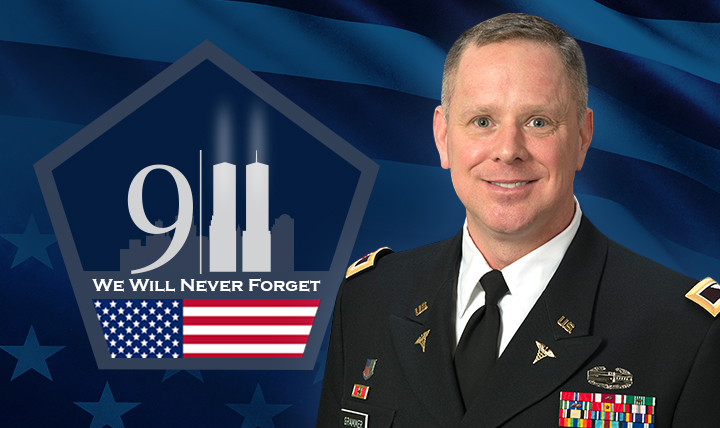9/11 Memories - Army Col. (Dr.) Geoffrey G. Grammer
 Army Col. (Dr.) Geoffrey G. Grammer, Defense and Veterans Brain Injury Center director
Army Col. (Dr.) Geoffrey G. Grammer, Defense and Veterans Brain Injury Center director
9/14/2016
By:
Psychological Health Center of Excellence
I was at Walter Reed in 2001; saw the Pentagon burning from the window. There was a fair amount of uncertainty for the role of behavioral health during the crisis. My mentor, Dr. Harold Wain, rose from uncertainty, commandeered a hospital van and driver, and took me with him to Arlington Hospital, Virginia, where we visited with victims on the ward and as they rolled in the door. It was bizarre how quickly we were assimilated into the care teams. It set the tone for the entire war for having embedded behavioral health assets as part of the acute trauma team. Eventually the work was published in a journal publication and a book chapter...but it all started with that day.
You also may be interested in...
Publication
Sep 12, 2016
 .PDF |
2.95 MB
.PDF |
2.95 MB
USU graduates, faculty and students were among the first responders to New York and Washington, as well as the Pennsylvania crash site. Their extensive training and experience enabled them to react and mobilize quickly, many of them within seconds of the Pentagon attack.
Publication
Sep 1, 2016
 .PDF |
141.85 KB
.PDF |
141.85 KB
Army Medicine is one of the world’s leading medical organizations. Support to military personnel on the battlefield, always the number 1 priority, requires significant ongoing research and development of medical materiel, training of personnel, and logistics of moving wounded or injured Soldiers. This document provides a brief discussion of advances ...
Publication
Sep 1, 2016
 .PDF |
71.49 KB
.PDF |
71.49 KB
Extremity injuries are the leading cause of combat injury. Survivability from these often complex wounds has increased remarkably in recent conflicts, due to improved body armor; changes to combat tactics, techniques and procedures; and improvements in combat casualty care.
You are leaving Health.mil
The appearance of hyperlinks does not constitute endorsement by the Department of Defense of non-U.S. Government sites or the information, products, or services contained therein. Although the Defense Health Agency may or may not use these sites as additional distribution channels for Department of Defense information, it does not exercise editorial control over all of the information that you may find at these locations. Such links are provided consistent with the stated purpose of this website.
You are leaving Health.mil
View the external links disclaimer.
Last Updated: July 11, 2023